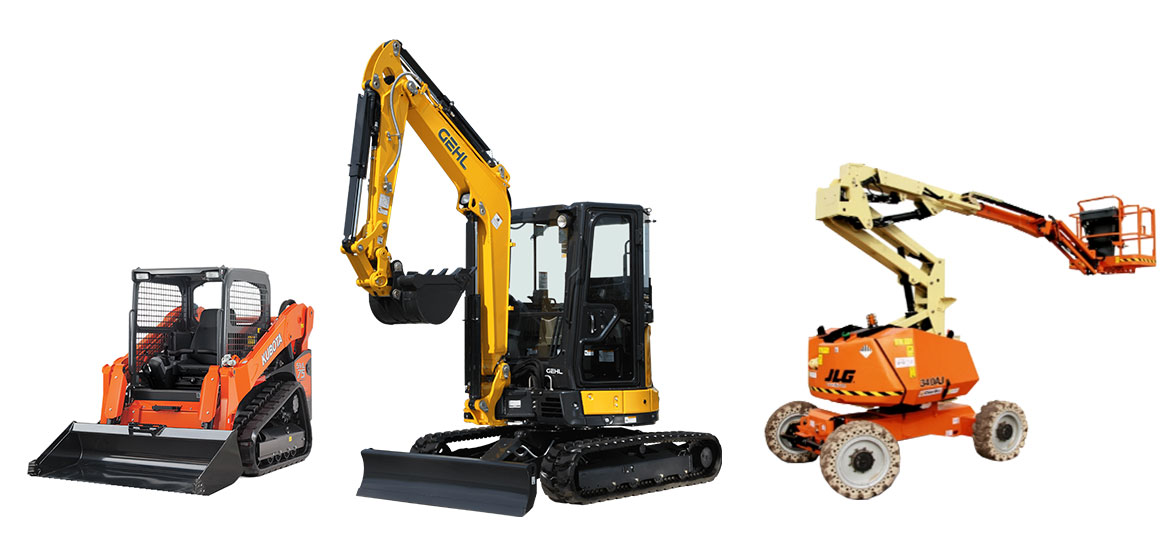Aerial Lift Rental: Versatile Training Solutions for High-Access Jobs
Aerial Lift Rental: Versatile Training Solutions for High-Access Jobs
Blog Article
Optimize Your Budget Plan by Comprehending the Expenses Connected With Construction Equipment Services
Recognizing the full range of prices associated with building tools rentals is vital for maximizing your budget plan. What methods can be used to efficiently handle these prices and ensure a more effective rental experience?
Review of Rental Expenses
When considering building and construction devices rentals, comprehending the associated prices is critical for reliable budgeting and job preparation. Rental expenses can differ substantially based upon a number of factors, including tools type, period of rental, and place. The first rental charge usually shows the tools's market demand and its connected functional abilities, affecting the overall cost.
In addition to the base rental rate, secondary costs may emerge, such as transportation charges, gas surcharges, and maintenance costs. It is vital to account for these additional costs to properly evaluate the overall price of renting equipment. The rental period can affect rates; longer services may qualify for reduced rates, while temporary services might incur greater everyday costs.

Break Down of Rental Rates
A detailed understanding of rental rates is necessary for service providers and task supervisors intending to enhance their budget plans. Rental rates for building devices normally contain numerous elements, consisting of base prices, time-based fees, and use costs.
Base rates are the core costs related to the rental of the equipment, often determined by the kind and size of the machinery. These rates can vary considerably, influenced by variables such as devices demand, availability, and local market patterns. Time-based charges, which might be daily, weekly, or monthly, offer to accommodate various job timelines and rental durations.
In addition, rental rates may consist of usage costs, which are suitable when equipment is made use of beyond a specified limit, guaranteeing that the rental firm can represent wear and tear. Seasonal need fluctuations can additionally impact rental prices, with peak building periods normally commanding greater prices.
In addition, comprehending the rental company's plans regarding upkeep and insurance can give additional understanding into the total expense framework. By evaluating these components, service providers can make educated choices, guaranteeing the option of rental equipment lines up with both project demands and spending plan constraints.
Additional Charges to Take Into Consideration
Recognizing the complexities of added costs is essential for service providers to manage their overall rental costs successfully. Past the typical rental prices, various extra fees can dramatically influence the complete cost of equipment rental. These fees typically consist of shipment and pick-up fees, which can vary based on range and logistics included in carrying the devices to and from the task site.
Furthermore, some rental business may impose gas surcharges if the tools is returned with much less gas than when great post to read leased. It is likewise vital to know prospective cleaning costs, specifically for customized devices that requires comprehensive maintenance after usage.

Thoroughly assessing the rental contract and clarifying these added fees ahead of time can assist professionals avoid unanticipated costs and ensure that budget plans remain undamaged throughout the job lifecycle.
Repair And Maintenance Expenses
Routine maintenance and fixing costs are typically overlooked variables that can substantially affect the general price of building and construction devices services. When renting tools, it is important to consider not just the rental fees however additionally the prospective prices related to maintaining the machinery in ideal operating condition.
Several rental business consist of basic upkeep as component of the rental agreement; nevertheless, a lot more substantial repairs or unforeseen malfunctions can lead to added costs. It's important to assess the rental contract very carefully to comprehend what maintenance solutions are covered and useful source what obligations drop on the occupant.
In addition, equipment that is not well-maintained can result in inadequacies at work website, possibly enhancing and causing delays project expenses. To reduce these dangers, it is a good idea to carry out routine assessments and keep open interaction with the rental copyright regarding any issues that emerge throughout usage.
Insurance Policy and Responsibility Expenses
Insurance coverage and obligation expenses are vital components that can considerably affect the overall expense of building and construction tools rentals (heavy equipment rental). These prices make certain that both the rental business and the client are protected from possible monetary losses arising from crashes, damages, or theft throughout the rental period

Additionally, customers ought to understand any kind of deductibles or exclusions in the insurance plan, as these can influence potential out-of-pocket costs. Recognizing the terms and conditions of any type of insurance policy coverage is essential to avoid unforeseen costs. Inevitably, budgeting for insurance coverage and responsibility expenses can assist make certain a smoother rental experience and safeguard versus economic risks connected with building and construction projects.
Final Thought
Finally, a comprehensive understanding of the expenses related to construction equipment leasings is crucial for effective budget administration. By examining rental prices, added fees, maintenance costs, and insurance coverage organizations, individuals and requirements can reduce unforeseen expenses. This calculated technique not just boosts cost-effectiveness yet additionally makes certain that tasks proceed efficiently and successfully. Eventually, notified decision-making relating to devices leasings contributes to the overall success of construction endeavors.
Rental expenses can vary significantly based on numerous aspects, including tools kind, period of rental, and area (aerial lift rental). The rental duration can impact rates; longer leasings might qualify for discounted rates, while short-term rentals other could incur greater day-to-day charges
By conducting detailed study and engaging with trustworthy rental business, contractors can properly navigate the intricacies of rental pricing, inevitably maximizing their economic resources.
Past the basic rental prices, various auxiliary charges can dramatically impact the overall cost of devices service. Rental companies commonly provide obligation insurance that covers injuries to third events or damages to residential property, while equipment damage insurance policy can cover the cost of repair work or substitute if the rented out equipment is harmed.
Report this page